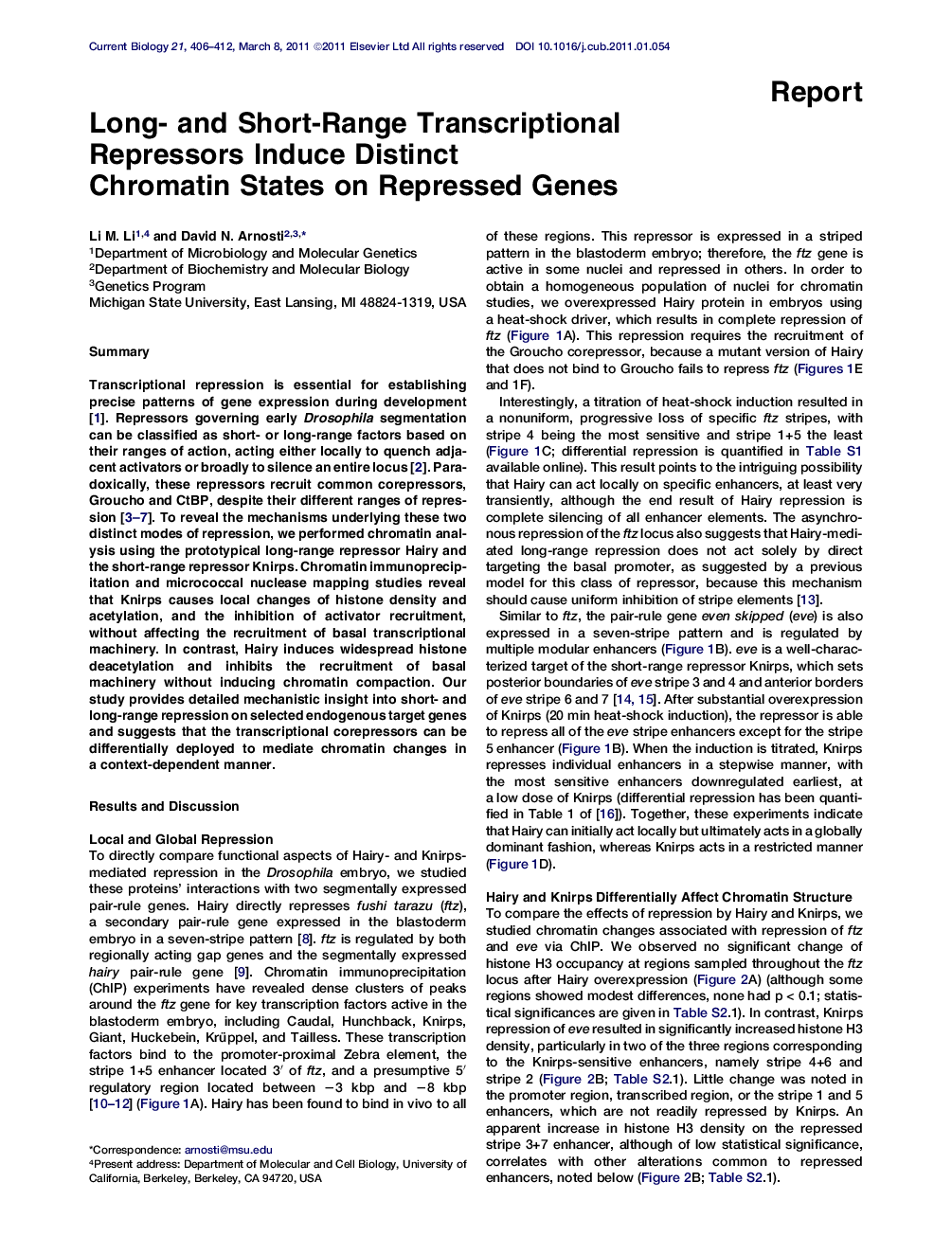| کد مقاله | کد نشریه | سال انتشار | مقاله انگلیسی | نسخه تمام متن |
|---|---|---|---|---|
| 2043215 | 1073331 | 2011 | 7 صفحه PDF | دانلود رایگان |

SummaryTranscriptional repression is essential for establishing precise patterns of gene expression during development [1]. Repressors governing early Drosophila segmentation can be classified as short- or long-range factors based on their ranges of action, acting either locally to quench adjacent activators or broadly to silence an entire locus [ 2]. Paradoxically, these repressors recruit common corepressors, Groucho and CtBP, despite their different ranges of repression [ 3, 4, 5, 6 and 7]. To reveal the mechanisms underlying these two distinct modes of repression, we performed chromatin analysis using the prototypical long-range repressor Hairy and the short-range repressor Knirps. Chromatin immunoprecipitation and micrococcal nuclease mapping studies reveal that Knirps causes local changes of histone density and acetylation, and the inhibition of activator recruitment, without affecting the recruitment of basal transcriptional machinery. In contrast, Hairy induces widespread histone deacetylation and inhibits the recruitment of basal machinery without inducing chromatin compaction. Our study provides detailed mechanistic insight into short- and long-range repression on selected endogenous target genes and suggests that the transcriptional corepressors can be differentially deployed to mediate chromatin changes in a context-dependent manner.
► Mechanistic differences distinguish long- and short-range transcriptional repression
► Long-range repression involves widespread histone deacetylation
► Short-range repression induces local chromatin changes
► RNA polymerase II transcription is differentially blocked
Journal: - Volume 21, Issue 5, 8 March 2011, Pages 406–412